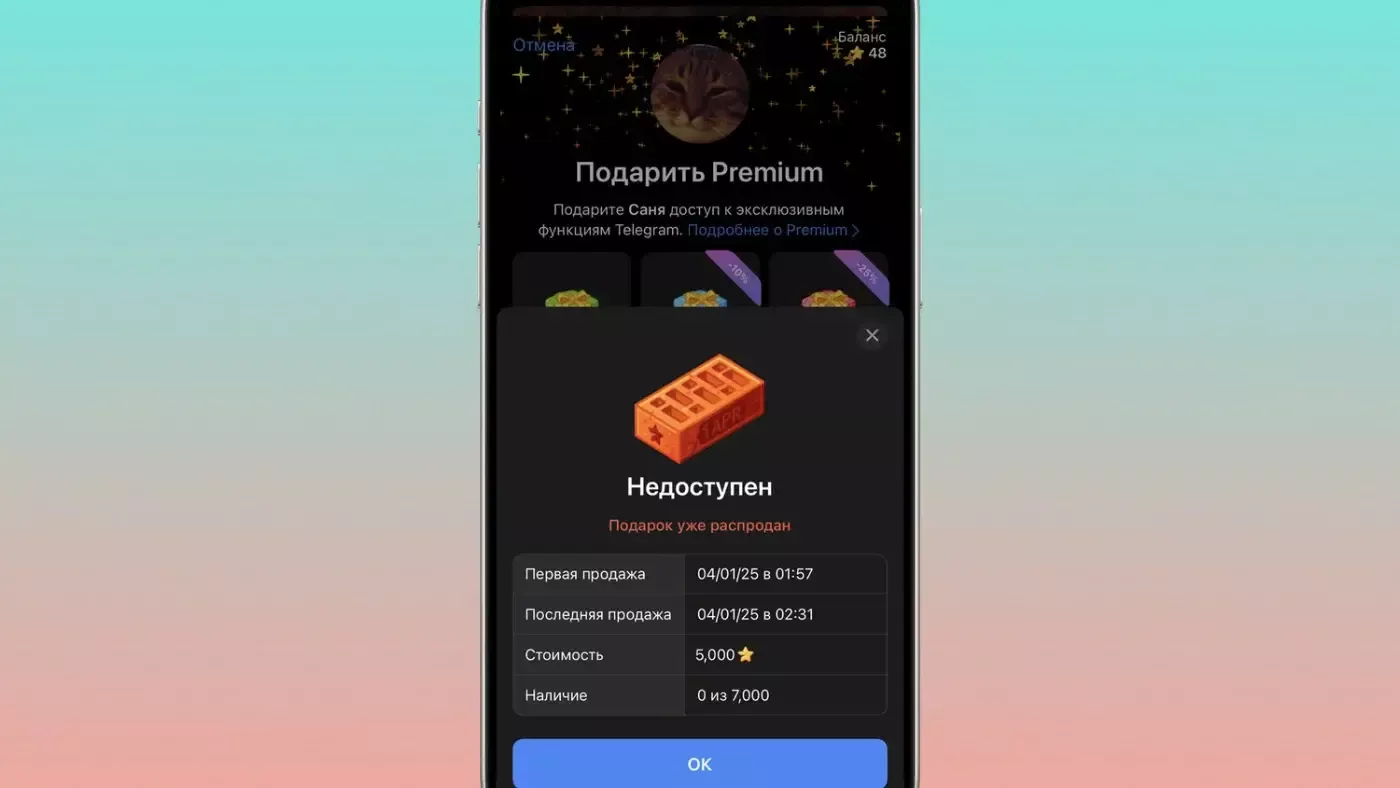
During the April Fool's Day event, the Telegram messenger generated approximately 100 million rubles in revenue within half an hour through the sale of virtual bricks. This was reported by the publication "Seti i signali," which specializes in news related to telecommunications and IT.
Virtual bricks sold at record speed
On April 1, at 01:57 Moscow time, the sale of exclusive gifts began, and by 02:32, the entire batch of 7,000 copies had been sold out. Each brick was priced at 5,000 stars. It is said that iPhone users could purchase this gift for 13,690 rubles, while Android device owners could buy it for 8,229 rubles.
As a result, Telegram earned between 58 million and 95.8 million rubles through this promotion. Owners of gifts marked with "1APR" could attach them to their profiles, auction them, or exchange them for stars.
Telegram's method of earning through virtual gifts
This is not the first instance of Telegram successfully monetizing virtual gifts. On February 14, the messenger sold 2,000 digital "hearts," each offered for 10,000 stars. According to Pavel Durov, this sale was completed within 6 minutes and brought approximately 400,000 dollars in revenue to Telegram.
NFT gifts and the Stars system
NFT gifts became part of the Telegram ecosystem at the end of 2022. At that time, an independent developer team launched the TON Gifts service on The Open Network blockchain. This step further developed the messenger's digital economy, providing users with the opportunity to exchange virtual items.
On October 5, 2024, Telegram officially introduced the ability to send gifts through Stars (the platform's internal currency). This expanded the messenger's monetization mechanisms and opened up new revenue sources.
Telegram's ability to generate significant revenue in a short period through the sale of virtual bricks once again confirmed its success in the digital economy. Under Pavel Durov's leadership, the messenger continues to sense user interests and effectively apply innovative monetization models.

